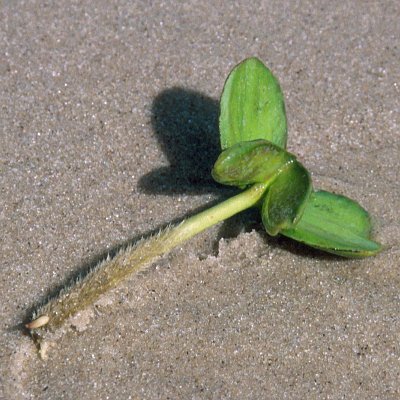|
Verbenaceae
The Verbenaceae ( ), the verbena family or vervain family, is a family of mainly tropical flowering plants. It contains trees, shrubs, and herbs notable for heads, spikes, or clusters of small flowers, many of which have an aromatic smell. The family Verbenaceae includes 32 genera and 800 species. Phylogenetic studies have shown that numerous genera traditionally classified in Verbenaceae belong instead in Lamiaceae. The mangrove genus ''Avicennia'', sometimes placed in the Verbenaceae or in its own family, Avicenniaceae, has been placed in the Acanthaceae. Economically important Verbenaceae include: * Lemon verbena (''Aloysia triphylla''), grown for aroma or flavoring * Verbenas or vervains (''Verbena''), some used in herbalism, others grown in gardens Taxonomy Tribes and genera in the family and their estimated species numbers: Casselieae (Schauer) Tronc. * ''Casselia'' Nees & Mart. - 6 species * ''Parodianthus'' Tronc. - 2 species * ''Tamonea'' Aubl. - 6 species C ... [...More Info...] [...Related Items...] OR: [Wikipedia] [Google] [Baidu] |
Verbena
''Verbena'' (), also known as vervain or verveine, is a genus in the family Verbenaceae. It contains about 150 species of annual and perennial herbaceous or semi-woody flowering plants. The majority of the species are native to the Americas and Asia; however, '' Verbena officinalis'', the common vervain or common verbena, is the type species and native to Europe. Naming In English, the name ''Verbena'' is usually used in the United States and the United Kingdom; elsewhere, the terms ''verveine'' or ''vervain'' are in use. Description Verbena is a herbaceous flowering plant, belonging to the Verbenaceae family, and may be annual or perennial depending on the species. The leaves are usually opposite, simple, and in many species hairy, often densely so. The flowers are small, with five petals, and borne in dense spikes. Typically some shade of blue, they may also be white, pink, or purple, especially in cultivars. The genus can be divided into a diploid North American and a p ... [...More Info...] [...Related Items...] OR: [Wikipedia] [Google] [Baidu] |
Lantana
''Lantana'' () is a genus of about 150 species of perennial plant, perennial flowering plants in the verbena family, Verbenaceae. They are native to tropics, tropical regions of the Americas and Africa but exist as an introduced species in numerous areas, especially in the Australian-Pacific Islands, Pacific region, South and Northeastern part of India. The genus includes both Herbaceous plant, herbaceous plants and shrubs growing to tall. Their common names are shrub verbenas or lantanas. The generic name originated in Late Latin, where it refers to the unrelated ''Viburnum lantana''. Lantana's aromatic flower clusters (called umbels) are a mix of red, orange, yellow, or blue and white florets. Other colors exist as new varieties are being selected. The flowers typically change color as they mature, resulting in inflorescences that are two- or three-colored. "Wild lantanas" are plants of the unrelated genus ''Abronia (plant), Abronia'', usually called "sand-verbenas". Eco ... [...More Info...] [...Related Items...] OR: [Wikipedia] [Google] [Baidu] |
Casselia
''Casselia'' is a small genus of flowering plants in the verbena family ( Verbenaceae) first named in 1823. Plants in the genus ''Casselia'' are native to South America. Species , Kew's Plants of the World Online Plants of the World Online (POWO) is an online taxonomic database published by the Royal Botanic Gardens, Kew. History Following the Convention on Biological Diversity, the Royal Botanic Gardens in Kew launched Plants of the World Online i ... accepts seven species in the genus ''Casselia'': *'' Casselia chamaedryfolia'' *'' Casselia confertiflora'' *'' Casselia glaziovii'' *'' Casselia integrifolia'' *'' Casselia rosularis'' *'' Casselia serrata'' *'' Casselia zelota'' References Verbenaceae Verbenaceae genera {{Verbenaceae-stub ... [...More Info...] [...Related Items...] OR: [Wikipedia] [Google] [Baidu] |
Lemon Verbena
''Aloysia citrodora'', lemon verbena, is a species of flowering plant in the verbena family Verbenaceae, native to South America. Other common names include lemon beebrush. It was brought to Europe by the Spanish and the Portuguese in the 17th century and cultivated for its oil. Description Lemon verbena is a perennial shrub or subshrub growing to high. The , glossy, pointed leaves are slightly rough to the touch and emit a strong lemon scent when bruised (hence the Latin specific epithet ''citrodora''—lemon-scented). Sprays of tiny purple or white flowers appear in late spring or early summer, although potted lemon verbenas may not flower. It is evergreen in tropical locations, but is sensitive to cold, losing leaves at temperatures below 0 °C (32 °F), although the wood is hardy to −10 °C (14 °F). Pruning is recommended in spring to encourage a bushy form. Due to its many culinary uses, it is widely listed and marketed as a plant for the herb gard ... [...More Info...] [...Related Items...] OR: [Wikipedia] [Google] [Baidu] |
Tamonea
''Tamonea'' is a genus of flowering plant Flowering plants are plants that bear flowers and fruits, and form the clade Angiospermae (). The term angiosperm is derived from the Ancient Greek, Greek words (; 'container, vessel') and (; 'seed'), meaning that the seeds are enclosed with ...s belonging to the family Verbenaceae. Its native range is Mexico to Tropical America. Species: *'' Tamonea boxiana'' *'' Tamonea curassavica'' *'' Tamonea euphrasiifolia'' *'' Tamonea juncea'' *'' Tamonea spicata'' *'' Tamonea subbiflora'' References {{Taxonbar, from=Q6138563 Verbenaceae Verbenaceae genera ... [...More Info...] [...Related Items...] OR: [Wikipedia] [Google] [Baidu] |
Parodianthus
''Parodianthus'' is a genus of flowering plants belonging to the family Verbenaceae. Its native range is northern Argentina. The genus name of ''Parodianthus'' is in honour of Lorenzo Raimundo Parodi (1895–1966), an Argentinian botanist and agricultural engineer, professor of botany in Buenos Aires and La Plata La Plata () is the capital city of Buenos Aires province, Argentina. According to the 2022 Argentina census, census, the La Plata Partido, Partido has a population of 772,618 and its metropolitan area, the Greater La Plata, has 938,287 inhabit ... with a focus on South American grasses. It was first described and published in Darwiniana Vol.5 on page 37 in 1941. Known species According to Kew: *'' Parodianthus capillaris'' *'' Parodianthus ilicifolius'' References {{Taxonbar, from=Q6061903 Verbenaceae Verbenaceae genera Plants described in 1941 Flora of Northeast Argentina Flora of Northwest Argentina ... [...More Info...] [...Related Items...] OR: [Wikipedia] [Google] [Baidu] |
Citharexylum
''Citharexylum'' is a genus of flowering plants in the verbena family, Verbenaceae. It contains shrub and tree species commonly known as fiddlewoods or zitherwoods. They are native to the Americas, ranging from southern Florida and Texas in the United States to Argentina. The highest diversity occurs in Mexico and the Andes. The generic name is derived from the Greek language, Greek words κιθάρα (''Cithara, kithara''), meaning "lyre", and ξύλον (''xylon''), meaning "wood," referring to the Tonewood, use of the wood in the sounding boards of string instruments. Several species, especially ''Citharexylum caudatum, C. caudatum'' and ''Citharexylum spinosum, C. spinosum'', are cultivated as Ornamental plant, ornamentals. Species 78 species are accepted. # ''Citharexylum affine'' D.Don - from northern Mexico to Nicaragua # ''Citharexylum alainii'' Moldenke - Dominican Republic # ''Citharexylum altamiranum'' Greenm. - northeastern Mexico # ''Citharexylum amabile'' (Bocq.) Ch ... [...More Info...] [...Related Items...] OR: [Wikipedia] [Google] [Baidu] |
Lamiaceae
The Lamiaceae ( ) or Labiatae are a family (biology), family of flowering plants commonly known as the mint, deadnettle, or sage family. Many of the plants are aromatic in all parts and include widely used culinary herbs like basil (herb), basil, mentha, mint, rosemary, Salvia officinalis, sage, savory (herb), savory, marjoram, oregano, Hyssopus officinalis, hyssop, thyme, lavender, and perilla, as well as traditional medicines such as catnip, ''Salvia'', Monarda, bee balm, Leonotis leonurus, wild dagga, and Leonurus japonicus, oriental motherwort. Some species are shrubs, trees (such as teak), or, rarely, vines. Many members of the family are widely cultivated, not only for their aromatic qualities, but also their ease of cultivation, since they are readily propagated by stem cuttings. Besides those grown for their edible leaves, some are grown for decorative foliage. Others are grown for seed, such as ''Salvia hispanica'' (chia), or for their edible tubers, such as ''Plectr ... [...More Info...] [...Related Items...] OR: [Wikipedia] [Google] [Baidu] |
Duranta Repens (Golden Dew Drops) W IMG 9162
''Duranta erecta'' is a species of flowering shrub in the verbena family Verbenaceae, native from Mexico to South America and the Caribbean. It is widely cultivated as an ornamental plant in tropical and subtropical gardens throughout the world, and has become naturalized in many places. Common names include golden dewdrop, pigeon berry, and skyflower. Description ''Duranta erecta'' is a sprawling shrub or (infrequently) a small tree. It can grow to tall and can spread to an equal width. Mature specimens possess axillary thorns, which are often absent on younger specimens. The leaves are light green, elliptic to ovate, opposite, and grow up to long and broad, with a 1.5 cm petiole. The flowers are light-blue or lavender, produced in tight clusters located on terminal and axillary stems, sometimes appearing as panicles, frequently recurved or pendulous, blooming in summer. The fruit is a small globose yellow or orange berry, up to diameter and containing seve ... [...More Info...] [...Related Items...] OR: [Wikipedia] [Google] [Baidu] |
Phyla Nodiflora (Frog Fruit) W IMG 9874
''Phyla nodiflora'', commonly known as lippia, kurapia, and frogfruit, is a species of flowering plant in the family Verbenaceae. It can be found in the tropics around the globe. It is often grown as an ornamental plant for ground cover, and is often present in yards or disturbed areas. Description The inflorescence consists of a purple centre encircled by small white-to-pink flower Flowers, also known as blooms and blossoms, are the reproductive structures of flowering plants ( angiosperms). Typically, they are structured in four circular levels, called whorls, around the end of a stalk. These whorls include: calyx, m ...s. The flower takes on a match-like look, which is why the plant is sometimes called matchweed. It is similar to the related species '' Phyla lanceolata'', but differs in having much shorter leaves that are often blunt and much more rounded. Both species are common as weeds and in the ornamental environment. References External links Jepson Manua ... [...More Info...] [...Related Items...] OR: [Wikipedia] [Google] [Baidu] |
Avicennia
''Avicennia'' is a genus of flowering plants currently placed in the bear's breeches family, Acanthaceae. It contains mangrove trees, which occur in the intertidal zones of estuarine areas and are characterized by its "pencil roots", which are aerial roots. They are also commonly known as ''api api'', which in the Malay language means "fires", a reference to the fact that fireflies often congregate on these trees. Species of ''Avicennia'' occur worldwide south of the Tropic of Cancer. The taxonomic placement of ''Avicennia'' is contentious. In some classifications, it has been placed in the family Verbenaceae, but more recently has been placed by some botanists in the monogeneric family Avicenniaceae. Recent phylogenetic studies have suggested that ''Avicennia'' is derived from within Acanthaceae, and the genus is included in that family in the Angiosperm Phylogeny Group system. Designation of species is made difficult by the great variations in form of '' Avicennia mari ... [...More Info...] [...Related Items...] OR: [Wikipedia] [Google] [Baidu] |



